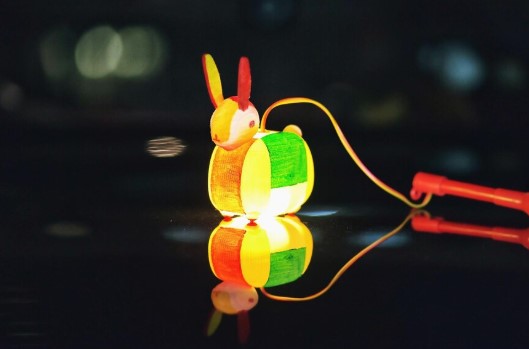Chain Mail Reinvented: Unveiling the Latest Trends in Armor Design

The intriguing new matter, which is neither granular nor crystalline, reacts to some stresses like a fluid and to others like a solid, according to experiments conducted in the Caltech lab of Chiara Daraio, G. Bradford Jones Professor of Mechanical Engineering and Applied Physics and Investigator at the Heritage Medical Research Institute. The novel material, called PAM (polycatenated architected materials), may find use in biomedical devices, robots, helmets, and other protective gear.
Although PAMs are not found in nature, we are familiar with their fundamental form because to the millennium-old production of chain mail, which is made up of tiny metal rings connected to form a mesh and is typically worn as a flexible type of armor. But PAMs are like chain mail with a boost.PAMs are composed of a range of shapes connected to generate three-dimensional patterns with nearly unthinkably diverse combinations, all based on the fundamental idea of interlocking shapes, similar to those seen in a chain. Utilizing 3D printers, Daraio and her colleagues created materials that display unique characteristics not present in other kinds of materials.
These kinds of materials have been the focus of two years of work at Daraio's lab by Wenjie Zhou, a postdoctoral scholar research associate in mechanical and civil engineering. "I wanted to create these things at the molecular level because I was a chemist, but that proved to be too difficult. I chose to join Chiara's group and study PAMs in order to find answers to my doubts regarding the behavior of these structures.
The PAMs developed and examined by Daraio's group were initially computer-modeled and intended to mimic lattice structures present in crystalline materials, but with entangled rings or multi-sided cages in place of the crystal's fixed particles.
After that, these lattices were printed in three dimensions utilizing a range of materials, such as metals, nylon, and acrylic polymers.
The PAMs were subjected to a variety of physical stresses once they could be held in the palm of one's hand. The majority of the prototypes are 5-centimeter (2-inch) cubes or spheres with a 5-centimeter diameter. Zhou says, "We began with compression, compressing the things a little more forcefully each time. Next, we attempted a straightforward shear, which is a lateral force similar to what would be used to tear apart the material. Lastly, we conducted rheology tests to observe the materials' gradual, then faster, and stronger reactions to twisting.
These PAMs acted like liquids in some situations. "Imagine applying a shear stress to water," Zhou explains. "No resistance would exist.
Although PAMs are not found in nature, we are familiar with their fundamental form because to the millennium-old production of chain mail, which is made up of tiny metal rings connected to form a mesh and is typically worn as a flexible type of armor. But PAMs are like chain mail with a boost.PAMs are composed of a range of shapes connected to generate three-dimensional patterns with nearly unthinkably diverse combinations, all based on the fundamental idea of interlocking shapes, similar to those seen in a chain. Utilizing 3D printers, Daraio and her colleagues created materials that display unique characteristics not present in other kinds of materials.
These kinds of materials have been the focus of two years of work at Daraio's lab by Wenjie Zhou, a postdoctoral scholar research associate in mechanical and civil engineering. "I wanted to create these things at the molecular level because I was a chemist, but that proved to be too difficult. I chose to join Chiara's group and study PAMs in order to find answers to my doubts regarding the behavior of these structures.
The PAMs developed and examined by Daraio's group were initially computer-modeled and intended to mimic lattice structures present in crystalline materials, but with entangled rings or multi-sided cages in place of the crystal's fixed particles.
After that, these lattices were printed in three dimensions utilizing a range of materials, such as metals, nylon, and acrylic polymers.
The PAMs were subjected to a variety of physical stresses once they could be held in the palm of one's hand. The majority of the prototypes are 5-centimeter (2-inch) cubes or spheres with a 5-centimeter diameter. Zhou says, "We began with compression, compressing the things a little more forcefully each time. Next, we attempted a straightforward shear, which is a lateral force similar to what would be used to tear apart the material. Lastly, we conducted rheology tests to observe the materials' gradual, then faster, and stronger reactions to twisting.
These PAMs acted like liquids in some situations. "Imagine applying a shear stress to water," Zhou explains. "No resistance would exist.
Did you know? You can comment on this post! Just scroll down
Because PAMs have all these coordinated degrees of freedom, with the rings and cages they are composed of sliding against one another as the links of a chain would, many have very little shear resistance." But when these structures are compressed, they may become fully rigid, behaving like solids.
This dynamism makes PAMs unique. "PAMs are really a new type of matter," Daraio says. "We all have a clear distinction in mind when we think of solid materials and granular matter. Solid materials are often described as crystalline lattices. This is what you see in the classic ball-and-stick models of atomic, chemical, or larger crystalline structures. It is these materials that have formed our conventional understanding of solid matter. The other class of materials is granular, as we see in substances like rice, flour, or ground coffee. These materials are made up of discrete particles, free to move and slide relative to one another."
Article Posted 4 Months ago. You can post your own articles and it will be published for free.
No Registration is required! But we review before publishing! Click here to get started
One Favour Please! Subscribe To Our YouTube Channel!
468k
Cook Amazing Nigerian Dishes, Follow Adorable Kitchen YouTube Channel!
1.1m
Like us on Facebook, Follow on Twitter
React and Comment
Click Here To Hide More Posts Like This
Watch and Download Free Mobile Movies, Read entertainment news and reports, Download music and Upload your own For FREE.
Submit Your Content to be published for you FREE! We thrive on user-submitted content!
But we moderate!

















